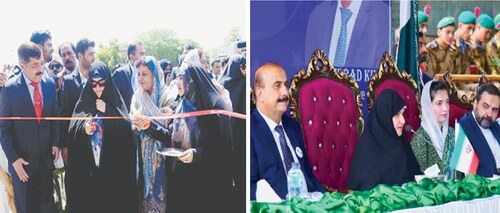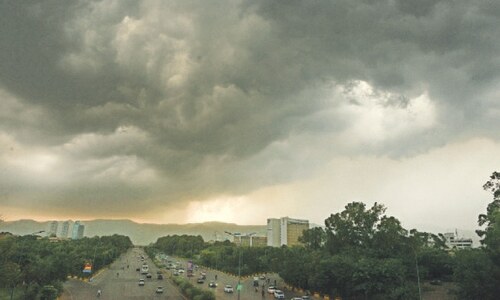Political leaders and social activists often blame ‘timber mafia’ for the ruin of forests to get mileage out of it but this is far from reality and thus, aggravating the problem, insists Haider Baig, of Sheshi Koh valley, which is known for dense forests.
With anxiety writ large on his face, the man said local population depended on timber for sustenance as no farming was possible in the valley, where people had very low land holdings and the natural environment didn’t support agricultural activities due to higher altitude.
His concern was that the timber harvested from the forest had been exposed to the sun, rains and snowfall in the open for two years due to the government’s ban on its transportation to the market in Chakdara, Lower Dir.
Baig said the people of the valley derived 60 per cent royalty of the timber price and that was the only source of income for them but the hue and cry about deforestation had delayed its transportation and thereby payments to them.
“No one bothers to differentiate between deforestation and timber harvesting. And that creates the real problem,” he said, adding that it proved counterproductive and gave birth to the unlawful ways of transporting timber.
Under the current forest policy, the people depending on the forest are given 60 percent royalty of the income obtained from the sale of timber when it is harvested.
The harvesting of timber takes places either by the general marking of forests as per the working plan of forests or by picking trees fallen by wind and snowfall or due to the growing age when their natural growth stops.
Mohammad Sarwar, a retired forest officer, said the working plan for the general harvesting of a forest was determined by the forest planning and management experts and generally it took 15 to 20 years for the forest of an area to be marked for harvesting.
In the interim period before general harvesting, he said, the dried, wind-fallen and mature trees are also marked in the area where a considerable volume of timber is derived from the forest. In both cases, 60 per cent of the income is given to the local community as royalty and in lieu of it they lend help to the government for the conservation of forests grown by their villages.
Few years ago, the government banned the transportation of timber got from marked trees in different compartments of the district on the demand of political and social activists.
A source in the forest department said around half a million cubic feet of timber was lying in the valleys of Bumburate, Rumbur, Birir, Damil, Arandu and Sheshi Koh. He said with every passing day, timber was depreciating due to the continuous decay.
General secretary of the umbrella organisation of all JFMCs in the district Sher Mohammad Khan said no illegal and ruthless cutting of trees in forests was going on in the region.
“Some elements are out to politicise the matter to serve own interests. In this way, they drive a wedge between the forest covered area and the others, which will further cast deeper repercussions on law and order situation,” he said.
Sher Mohammad regretted that millions of the cubic feet of dried wood had started decaying in forests as the government had been affected by the negative propaganda of ‘illegal cutting of trees’.
He asked the provincial government to lift ban on the transportation of harvested wood valuing billions of rupees to the market in Chakdara.
The latest forest policy in the province provides for decentralisation of the forest management thereby increasing the participation of local community in tree conservation efforts.
To achieve the purpose, joint forest management committees (JFMCs) have been established in each forest-flanking area. They are statutory bodies as given in the Forest Act whose office-bearers are elected by the local communities under the supervision of the forest department. The JFMCs have been given significant role in the forest management ranging from preventing unauthorised cutting to legal harvesting and transportation to the timber market. The income is also disbursed through JFMCs and gives an effective system of check and balance to ensure better conservation apart from achieving the end of sustainable development.
The recent tirade of Pakistan Tehreek-i-Insaf leaders against ‘timber mafia’ has filled the people of forest flanking area with more horror and fear as they already suffer the worst. They have lost the hope that the government will ever lift the ban on the transportation of the precious deodar wood to the market given the spate of statements by members of the provincial government. They insists the reality is that we are losing our wealth.
Published in Dawn March 1st , 2015
On a mobile phone? Get the Dawn Mobile App: Apple Store | Google Play













































Dear visitor, the comments section is undergoing an overhaul and will return soon.